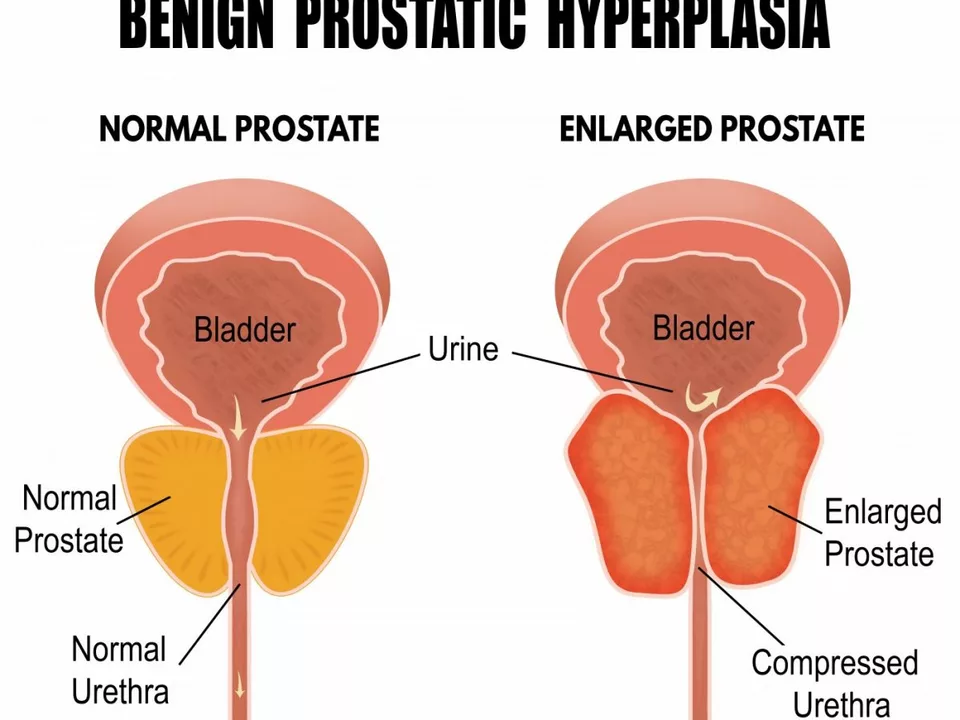Men Health: Prostate Problems and Simple Urinary Tips
If you’re a man dealing with weak urine flow, frequent trips to the bathroom, or sudden leaks, an enlarged prostate might be the cause. The prostate sits under the bladder and surrounds the urethra. When it grows, it can squeeze the urethra and make it hard to empty the bladder fully. That leads to slow stream, straining, urgency, and sometimes incontinence.
Not every urinary issue means a big problem, but paying attention early helps. Small changes in lifestyle and simple tests can tell a lot. Your doctor can run a quick exam, check urine, and measure how well your bladder empties. Those steps separate simple, treatable causes from conditions that need more care.
Why the prostate affects urination
The gland’s position makes it a natural traffic choke point for urine. As men age, the prostate often enlarges due to hormonal shifts. That enlargement presses on the urethra, causing bladder muscles to work harder. Over time the bladder may become overactive or weak, which creates urgency, frequency, night-time waking, and leaks. Other issues like infections, stones, or neurological problems can mimic these symptoms, so a clear diagnosis matters.
Symptoms to watch for: weak stream, difficulty starting urination, sensation of incomplete emptying, sudden urges, dribbling after peeing, and waking at night to urinate. If you notice blood in the urine, severe pain, or inability to urinate, see a doctor immediately.
What you can do now
Start with small changes that often help. Reduce caffeine and alcohol, which irritate the bladder. Drink fluids earlier in the day and limit them before bed to cut down on nightly trips. Double void: try peeing, wait a few minutes, then try again to empty the bladder better. Pelvic floor exercises can strengthen control and lessen leaks—practice tightening and releasing the pelvic muscles a few times daily.
Keep a symptom diary for a week: note how often you urinate, when leaks happen, and what you drank. That helps your clinician find patterns and pick treatment. Treatments range from lifestyle steps and medications that relax the prostate or shrink it over time, to minimally invasive procedures or surgery for advanced cases.
You can ask about medication side effects and how long to try a treatment before switching. If medication isn’t enough, newer outpatient procedures like UroLift or Rezūm can reduce symptoms with shorter recovery than traditional surgery; discuss benefits, risks, and recovery time so you make an informed choice based on how symptoms affect your life.
Don’t ignore mental stress—anxiety can make urgency worse. Talk to your doctor about safe options and ask what fits your age and health. If you’re unsure where to start, a primary care doctor or urologist can guide you, run tests, and discuss treatments tailored to your needs.
Men’s health is about small actions adding up. Watch symptoms, try simple changes, keep notes, and get a checkup when things change. Early steps often prevent bigger problems and help you stay in control of daily life.

